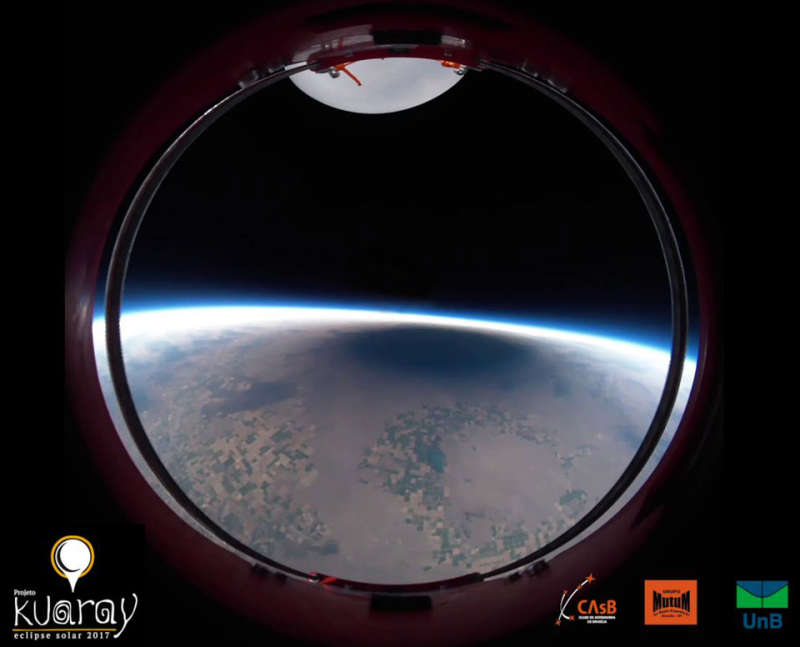Credit & Copyright: Kuaray Project,
NASA Eclipse Ballooning Project,
Brasilia Astronomy Club,
Montana State U.
Explanation:
Where were you during the Great American Eclipse of 2017?
A year ago last week, over 100 million of people in
North America went outside to see a
partial eclipse of the Sun,
while over ten million drove across part of the
USA to see the Sun completely disappear behind the Moon -- a
total solar eclipse.
An estimated 88 percent of American adults saw the eclipse either personally or
electronically.
One of the
better
photographed events
in human history,
images from the eclipse
included
some
unusual vistas,
such as from balloons floating in the
Earth's stratosphere.
About fifty such robotic balloons were launched as part of NASA's
Eclipse Ballooning project.
Featured is a frame taken from a
360-degree panoramic video
captured by one such balloon set aloft in Idaho by
students
from
Brazil in conjunction with
NASA and
Montana State University.
Pictured, the dark
shadow of the Moon was
seen crossing the Earth below.
Although the total
eclipse lasted less than three minutes, many
who saw it may
remember
it for a lifetime.
Many North Americans will get a another chance to
experience a total solar eclipse in
2024.
1999 2000 2001 2002 2003 2004 2005 2006 2007 2008 2009 2010 2011 2012 2013 2014 2015 2016 2017 2018 2019 2020 2021 2022 2023 2024 2025 |
Yanvar' Fevral' Mart Aprel' Mai Iyun' Iyul' Avgust Sentyabr' Oktyabr' Noyabr' Dekabr' |
NASA Web Site Statements, Warnings, and Disclaimers
NASA Official: Jay Norris. Specific rights apply.
A service of: LHEA at NASA / GSFC
& Michigan Tech. U.
|
Publikacii s klyuchevymi slovami:
total solar eclipse - polnoe solnechnoe zatmenie
Publikacii so slovami: total solar eclipse - polnoe solnechnoe zatmenie | |
Sm. takzhe:
Vse publikacii na tu zhe temu >> | |
